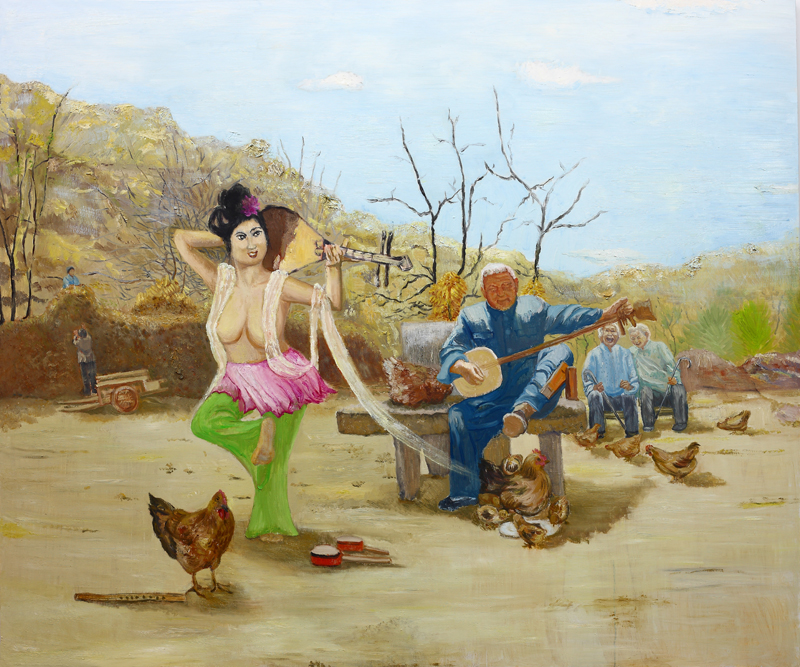Reflection
The Muse has Awoken No.3, 2011, Oil on canvas, 181 x 217cm
To be Elegant while Looking Silly and Coughing
Hu Fang
Culture and its damage do not trigger concupiscence; what triggers concupiscence is the crack, abruption and fissure in between.
-Roland Barthes
“!!!”
《!!!》 No.1, 2009, Leather shoes, wood, electric wire, acrylic plastic, electric light bulb
There is a pair of tacky men’s leather shoes, shiny, probably made in Guangdong or Wenzhou. They suit a fresh graduate who is aggressive but draws a low salary, or a salesman working his ass off to make manager. The shoes may even hide a young man’s artistic dreams: if you accidentally broke open a heelpiece of the shoes, you may find a palette, paint, paintbrush and a lamp for lighting there and ready to use. With them, you can carry out a creation named painting.
No haste: to do so, you must take off your shoes and stand on the ground in bare feet or in socks. Holding the lamp with your left hand, you are ready to mix the colors; raising the heel piece with your right hand. you are only allowed a dim view of a few centimeters. It is difficult to paint, but always bittersweet, especially when you can create art whenever you take off your shoes.
With its spy shoes design, Duan Jianyu’s !!! illustrates a familiar “Double Life”. However, art is no longer an underground game played as in the Cold War period. Art is becoming a smart, elegant, white collar career. So how is painting related to tacky shoes and their removal? It is a bit funny but also a bit moving, because people today are not that persistent in art, but people and things in Duan’s work seem to be obsessed with some outdated ideology. It is the difference in times of living that makes the piece fascinating.
2
The brushwork and color in Duan’s work bizarrely bring us to a blurry and slightly annoying place. Her paintings recall a boundary that is mentally non-tangible in our daily lives. Yet they precisely recall the feeling of living in modern China: dynamic and tacky. Maybe the haunting “tackiness” is the product of our pursuing modernization. 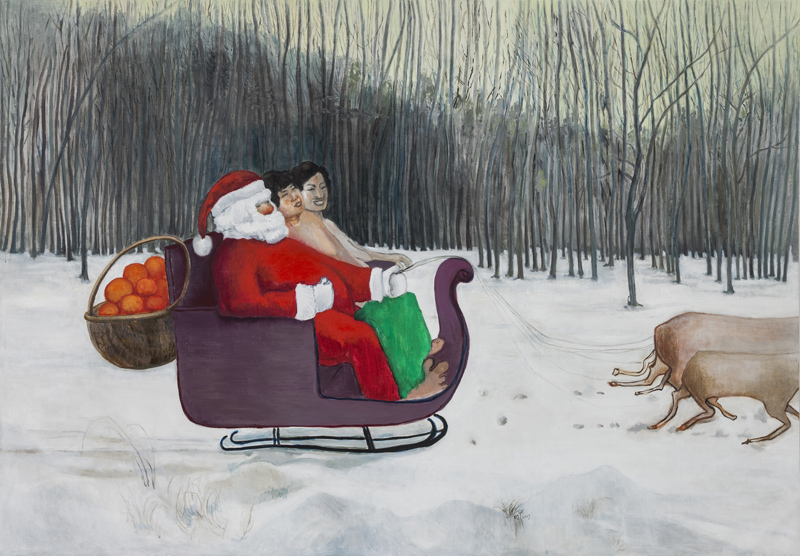
Sino-European Still Collection No.1 , 2013, Oil on canvas, 180X260cm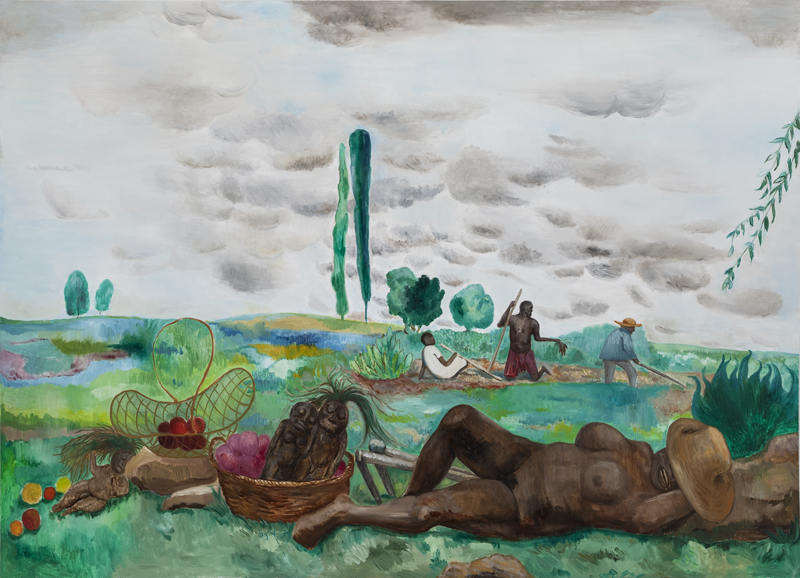
Sino-European Still Collection No.2 , 2013, Oil on canvas, 180X250cm
It is not an accurate measurement of life, and no political symbols are added intentionally. It is just a strange involvement and struggle. Intoxication and anxiety conglomerate under the brush of Duan, sublimating into a personality brimming with Chinese tints. Amidst the hilarity of “If You are the One” dating show and nation-wide applause, Chinese landscape still lingers on. There is moment of the heart sparkling inside the work that is not necessarily funny.
Over drama, Duan Jianyu prefers rural farce.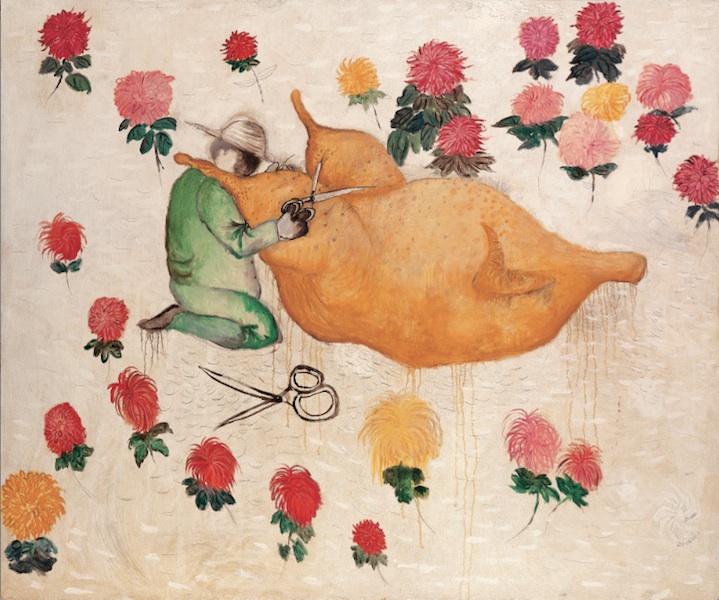
Art Chicken No.11, 2004, Oil on canvas, 181 x 217cm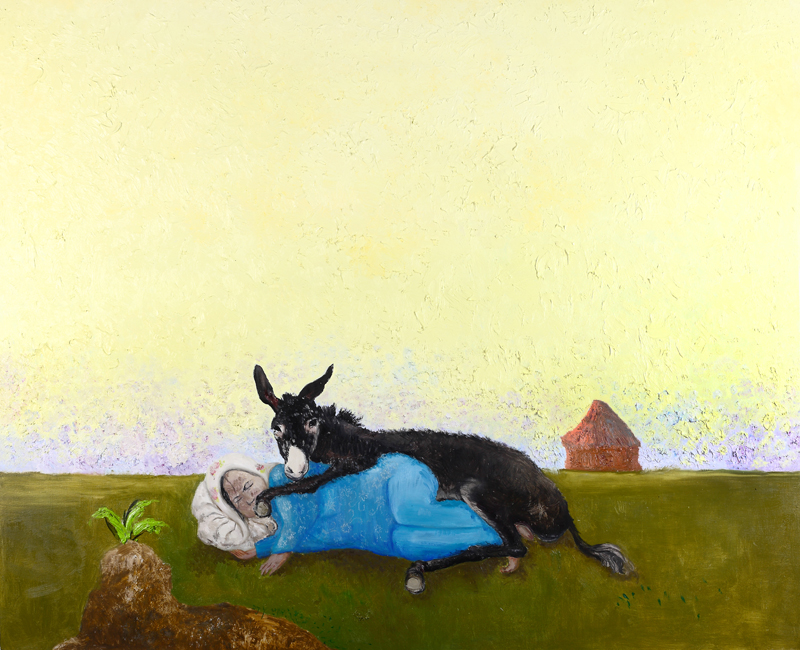
The Youth of Our Village, 2012, Oil on canvas, 181 x 217cm
3
The “airhostesses” in Duan Jianyu’s Sisters series always have chubby figures and clumsy movements. However, they are passionate in their pursuit of life, even if they have to place themselves in dangerous or torturous situations. They have a special sex appeal, and a sense about the material world. Their dialogues with cucumbers, watermelons, bananas, lions and tigers are powerful. They are our sisters, mothers, wild animal trainers, shop girls, lovers, sponsors, entertainers and psychologists.
Duan’s “airhostesses” entice us on board using watermelons and other kinds of fruits. Watermelons may not pass the safety inspection but we can eat them immediately when we are thirsty and tired. This is also part of survival wisdom in the Chinese mind, which grows from the mud, but now we also have to deal with global survival 101.
Suitcases in Duan Jianyu’s work are more than accessories of travellers. They share a blurred group identity, which reminds us anxiously of our ambiguous relationship with our surroundings. One suitcase can have a romantic and slightly pretentious solitude while a bunch of suitcases have an association of safety and mediocrity. These suitcases perform like pantomime and operculum actors who follow rules that parallel society’s. It is a world where fantasy meets reality, in which you always think you should fly higher but realize that you are merely going with the flow every passing day. 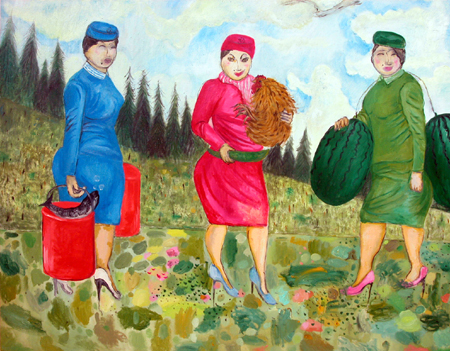
Sister No.1, 2004, Oil on canvas, 190 x 210cm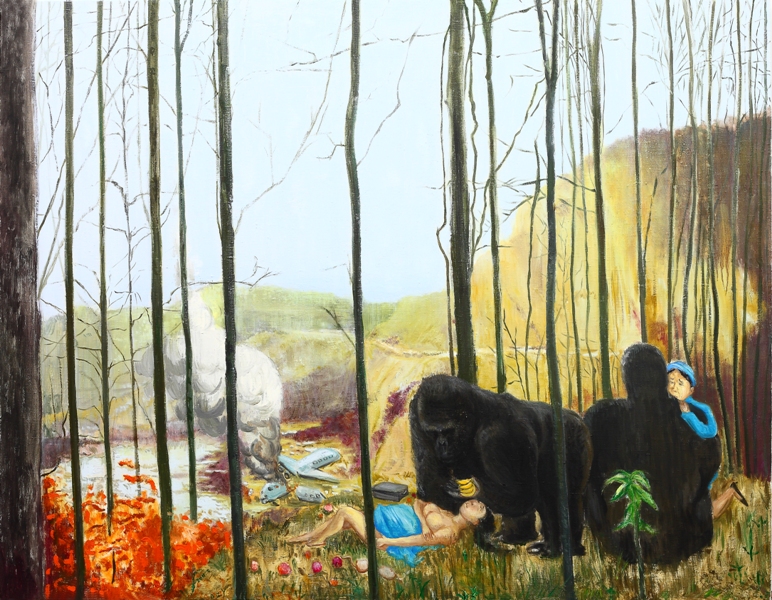
Sister No.16, 2011, Oil on canvas, 140 x 180cm
These suitcases become suitcases that have their own will to travel. Whether moving or not, they are driven by a desire to struggle. What matters is not what the suitcases contain but how they interact with other things. In the moments that these suitcases doze off, we see their alternative lives.
4
“Imagination, the lubricant of everything; mysterious, that would not have it told. Nature is flowers blooming, leaves falling, snowing, the moon showing its shadow, rainbows and fog. All the reality living inside adds an aesthetic to it.” ①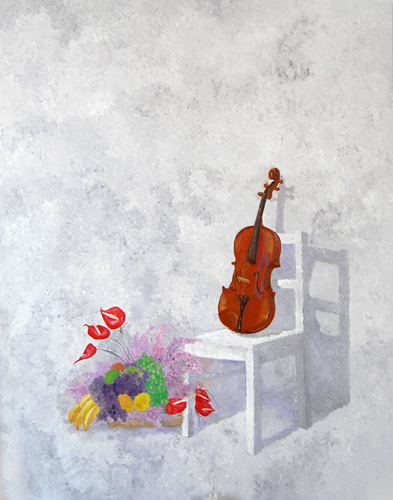
Ikebana: The path to the bathroom is where I encountered a large field of rosemary No.1, 2009, Oil on canvas, 217 x 181cm
In her “Ikebana” series (2009) , Duan Jianyu shows us a series of views that seem to fit the middle class, in terms of the abstract idea of this class. “Ikebana” : it is full of the essence of spring on its way to the kitchen; Ikebana: I encountered a rosemary plant on the way to the washroom; Ikebana: I encountered a rabbit on a tranquil path. Under this poetic title, the paintings themed “Ikebana Art” seem to integrate the totality of a refined style as agreed upon by the middle class. Violins, wedding gowns, guitars, cats, and of course different Ikebana. But if you notice the details, Odd fruit-Ikebana pairing and the drawing of such views are no more an inner “drift ” against appreciation of beauty than reluctance to descend to sarcasm and obvious criticism.
“I like elegance but I cannot reach it. My paintings are always like someone spitting onto a beautiful landscape painting. It is not perfect. Maybe it is the emotion I want to show subconsciously, to be elegant while simultaneously looking silly and coughing.”②
5
One painting in the Going Home series (2009) also shows beautiful scenery: bright sunshine upon greenery, where a girl who adjusted to city life and became a totally different person nakedly and bravely returns to her native village. It is a bold but vague form of beauty as Chinese people today are quite familiar with such confusion. Can a soul wandering between city and village find a real home?
If it is said that such idealistic pastoral scenery provokes a foil to the contradiction of surviving reality, Duan Jianyu shows the inner depth of village life in her recent series A Basket of Eggs (2010). A common countrywoman breastfeeds her baby through silent, moonlit nights and peaceful days. The baby leans close to her. A basket of eggs sits quietly to the side. They live in utter interdependence and trust. The ground they live on contains everything, like an earthly anthem as sacred as Renaissance religious painting. 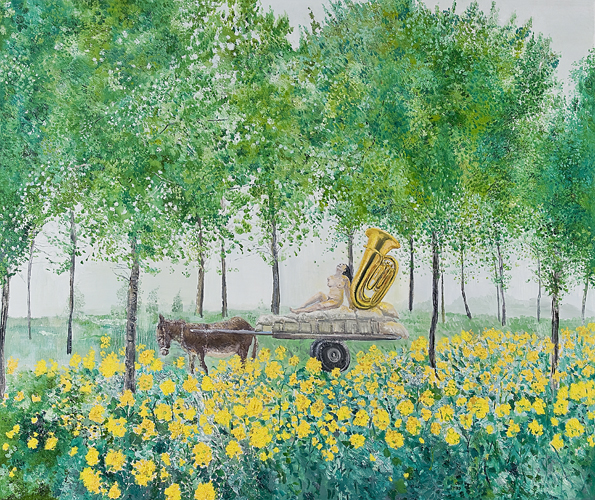
Going home No.1, 2009, Oil on canvas, 181 x 217cm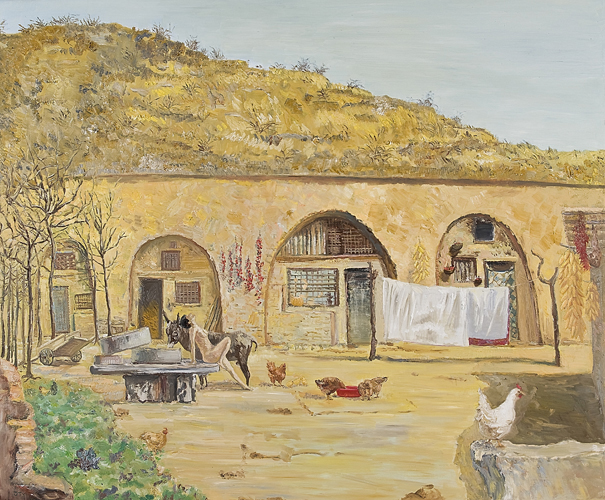
Going Home No.2, 2009, Oil on canvas, 181 x 217cm
We therefore can see the real sophistication and openness in Duan Jianyu’s painted universe. “Concept” is important in her paintings, but not the critical factor. What comes into our eyes is an integrated “image” that is more lively and complicated than some “concept”. Moreover Duan Jianyu uses her barely adequate skills just enough to present this image, as she puts it, “Just like a measured handful of the breast of an air hostess, no more, no less, when you grab it with one hand it is perfectly enough.”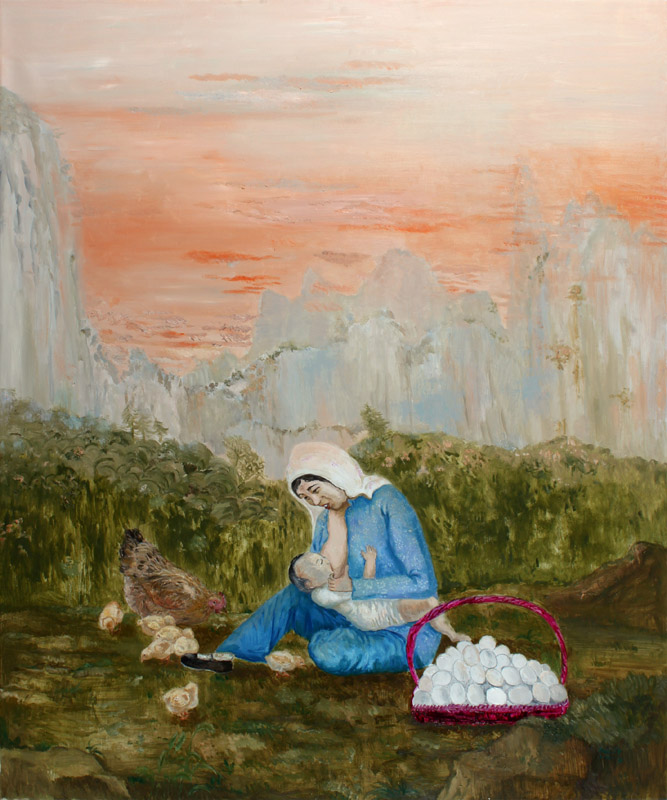
A Basket of Eggs No.1, 2010, Oil on canvas, 217 x 181cm
“I search for the trivial, petty, fragile and mysterious details of life. I employ camouflage or artifice to portray them quietly, clumsily, seemingly reasonably or courteously. I obsess over the miscellaneous things in life.”③
What is it implying about the criticisms of the “lack of latency” and “lack of lust” in male-dominated “Conceptual Art”, as she explored in her Pawnshop series (2009)? In Le Plaisir du Texte, Roland Barthes observed, “Such contemporary art works lose their certainty whenever looked at. (Because once seen, their damaging intentions become immediately known: they lose their capacity to make people meditative or happy).” He also wrote: “Isn’t the crack of one’s clothes the sexiest part of the body?”④ Thus, can we not say that Duan Jianyu’s paintings are a feminine “pleasure in painting” instead of accomplishing some masculine “significance?
6
Although it is meaningless for words to guide when Duan says everything she wants through her paintings, she also loves writing stories and novels, such as New York Paris Zhumadian (2008), Wang Keu: The Story of an Art Lover (2008), and A Document which has just been Discovered (2002). She also writes essays, including Plateau Life Guide (2008) and the earlier Plateau Life Guide (2001), in which she teaches how to use wool shears, how to spend a night on the plain, and how to sew. She even silkscreen printed the instructions onto some of her paintings (such as Hey, Hello, Hi (2001) and Goodgood Morning (2006)).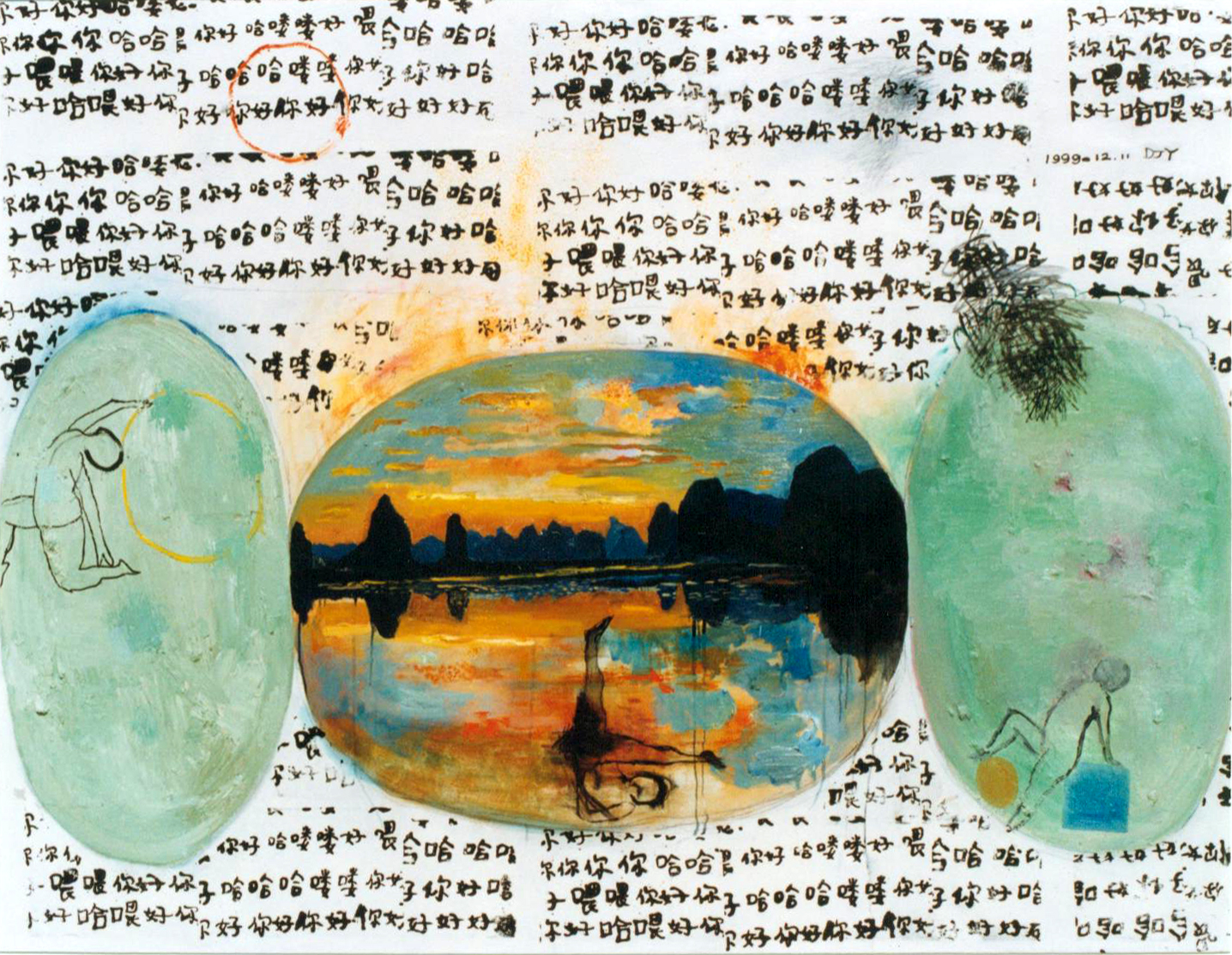
Hey, Hello, Hi No.10, 1999, Oil and silk screen on canvas, 140 x 180cm
In her novel New York Paris Zhumadian, she created a character Hu Xiang who came from the village, and wanted his ill father to stay in his dorm. He “is like that person in news who carries his father to class”, developing a new son-father relationship. “Hu Xiang cannot endure to seeing father’s slightly hunched back and extruding joints due to overwork. Sometimes things can never be compensated for, if not immediately. He wants to immediately carry his father on his back to the Great Wall, to the seaside, to the Great Plains and even to Mount Everest!” They rediscover each other and happiness in life. They raise chickens in a quiet corner of the schoolyard and embark upon a journey of fantasy. They dream they walk around the world with the companions of a massage chair, chickens and airhostesses. 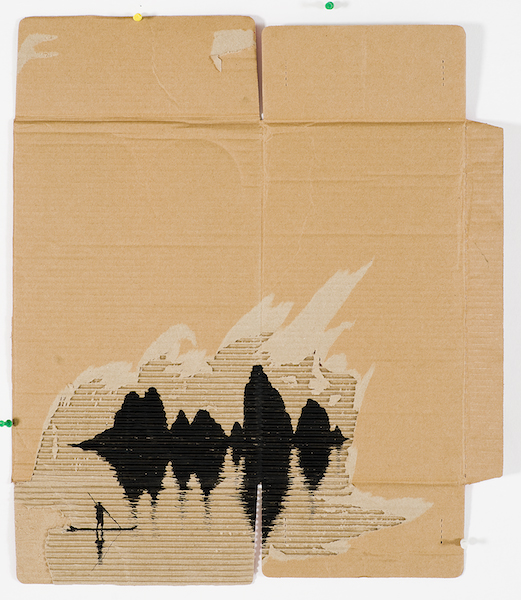
Beautiful Dream 04, 2008, Ink on cardboard, 60.5 × 52.5cm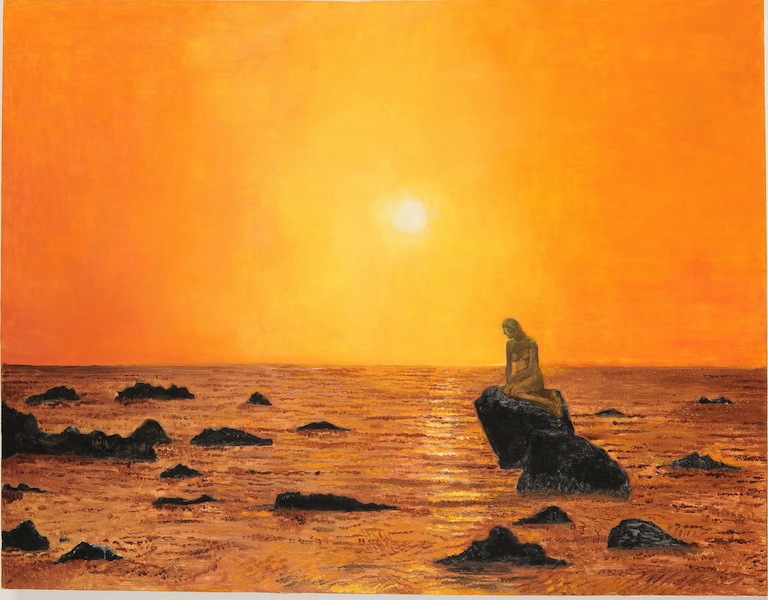
Beautiful Dream – The Daughter of the Sea, 2008, Oil on canvas, 140×180cm
Duan Jianyu portrays a dream of the world in the most mediocre daily life of China. It is embarrassing, incomplete, mixing the characteristics of the pre-modern and post-modern (just like the formations of “New York Paris Zhumadian”), but it is touching. When Hu Xiang has to graduate and he has to follow the dream he created for his village father, he must join the middle class in the city. This becomes the direct motivation of Chinese social development. After all, the world is not that far away from Hu Xiang’s dream. It seems to be right under his nose.
The New York Paris Zhumadian painting series is innately connected to Hu Xiang’s story, as a platform to view the “world’s common scenery” and to present the mental boundary where mundane meets fantasy. The mediocre write an epic about daily life, about how they cannot bear the shock of reality. That enables us to review our fragile relationship with our surroundings, and accommodates us to resting and unwinding a dream full of sweetness from the struggle with an optimistic reality. Ultimately, we cannot escape; we can only accept such mediocre poetry. This may be one of the most existentially frustrating delights of our generation.
7
Duan Jianyu clearly understands the great tradition of painting, maybe because that tradition cannot be shaken off, she is not so interested in the “Now”. (“I think painting is not the best means of expressing the ‘Now’,” she has said.). That is why she does not destroy but instead shifts and drifts to “the crack of clothes”. She triggers the sort of lust that is intentionally forgotten with the formal, mass and conventional edges, but leads to the changing, blank (thus able to carry any kind of appearance) edges. It makes you irrationally excited and somewhat comforted: it may be just because we are ignoring the abnormalities in our bodies.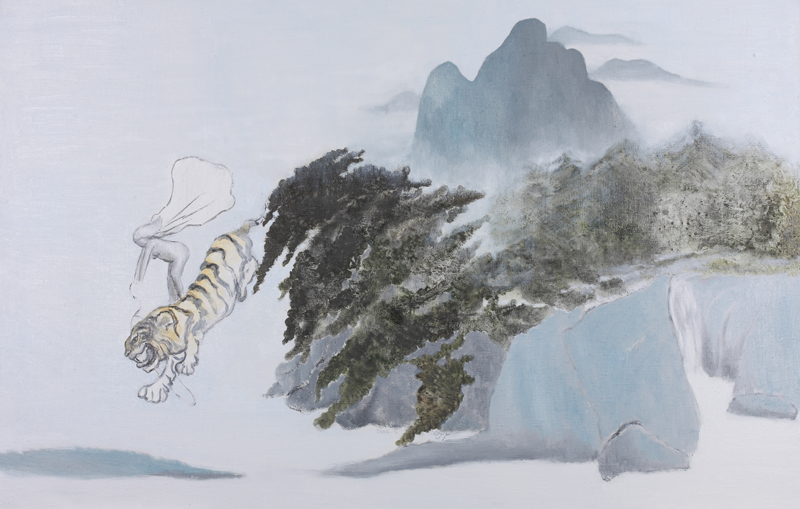
The Beauty and the Path of Beauty No.3, 2012, Oil on canvas, 110 x 170cm
Muse and Museum No.2, 2011, Oil on canvas, 230 x 800cm
Her paintings test our simultaneous fragility and stubbornness. Compared with the reality we accepted and indulged beyond painting, our current aesthetic crankiness is comedic.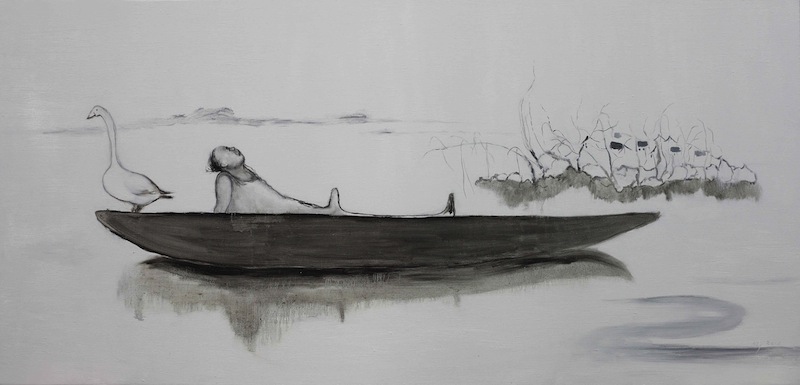
Homesickness No.2, 2012, Oil on canvas, 120 x 250cm
Notes:
① Quoted from Duan Jianyu’s working journals including,
Scrap, aka Chickens in an Appropriate Temperature, and others.
② Ibid.
③ Ibid.
④ Quoted from Roland Barthes, Le Plaisir du Texte, Chinese edition translated by Tu Youxiang, Shanghai Renmin Chubanshe, 2002. Pages 18, 28. For the first chapter of the book, Roland Barthes uses “Affirmation” as the title, explaining what is the “Pleasure of the Text”. “The Pleasure of the Text is like fake bacon, of which can be said, ‘There is no debate, no explanation. It does not have to decline anything.’ ‘I evade the subject under discussion; in the future, it will be my unique way of declining.’” This is a way of affirmation. To search for Duan Jianyu’s “Pleasure of Painting”, we have to develop another form of critique from this passage. This critical form may require us to give up all criticism and first enter the “Pleasure of Painting”. “Obviously, the Pleasure of the Text infuriates: not because it disobeys moral strictures, but rather due to its digression from subject, its dissipation and its drift.” (Le Plaisir du Texte Twelve, The Right, Page 32).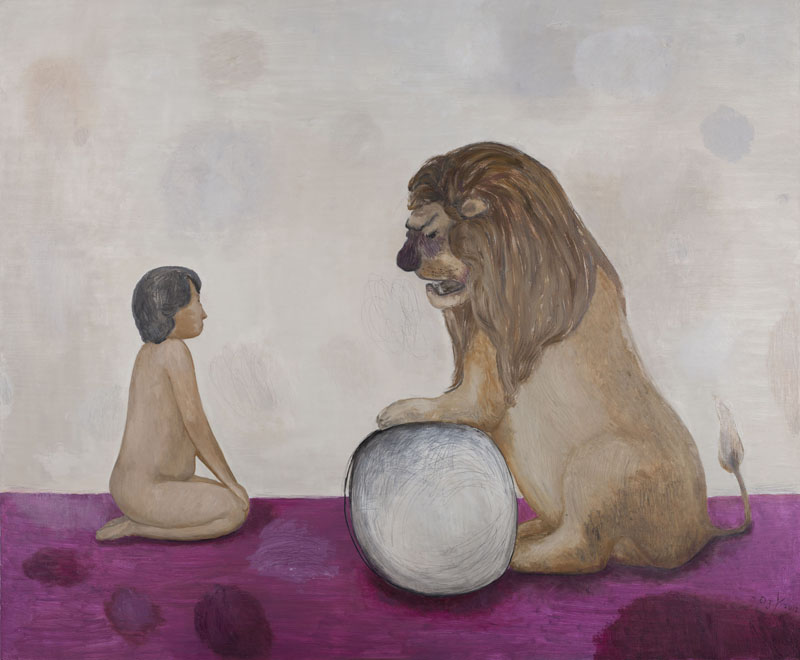
Anger, 2011, Oil on canvas, 181 x 217cm
(All images: Courtesy the artist and Vitamin Creative Space, Text: Vitamin Archive)
